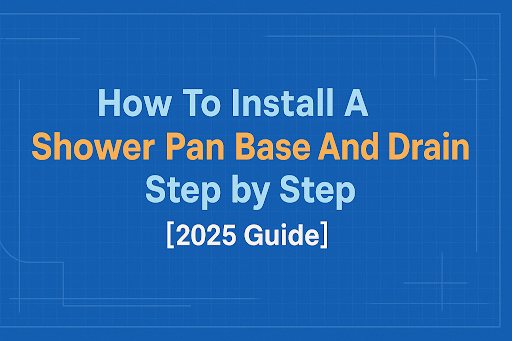Are you looking for a Pex pipe design layouts? Have you ever felt a sudden cold shock in the shower or low water pressure when a dishwasher is being used? This is due to pressure drop. Pressure drop is the loss of pressure that occurs as water flows through the pipes due to friction and other factors such as changes in direction or pipe diameter.
Drop in pressure within a plumbing system can cause inconvenience and result in additional costs for homeowners. For this reason, design professionals should ensure that the water system can deliver the required pressure and flow rate for all fixtures and equipment. To minimize pressure drop in Pex pipes, careful consideration should be given to piping design, including sizing and material selection to reduce friction and turbulence.
In this article, we will first discuss Pex pipe design layouts and then provide you with design tips to minimize pressure drop in Pex pipes. Let’s jump right in!
Pex Pipe Design Layouts
A Pex pipe system allows for different plumbing design layouts due to its flexibility. The design layout is a critical factor in ensuring that the system performs efficiently and reliably throughout the building. Numerous factors should be considered in the design process and one of the primary considerations is minimizing pressure drop which is why we decided to talk about design layouts in this article.
In this section, we will explore three Pex pipe design layouts and talk about the features of each layout.
1. Trunk and Branch
Figure 1
Trunk and Branch (T&B) Pex pipe design is a piping layout used by plumbers to distribute potable water using flexible Pex pipes. The design involves using a main trunk line, which is the primary pipe that runs from the water source and branches out into smaller pipes called branch lines. The branch lines connect to individual outlets, such as faucets or showers.
In a T&B Pex design, the trunk line services multiple outlets, while the branch line services one to three closely grouped outlets, such as those in a bathroom. Plumbers can install the Pex pipes in a similar way as rigid piping by using tee and elbow fittings to connect branch take-offs from the main trunk. However, Pex pipes come in long coils, which means that coupling fittings can be reduced or eliminated. The use of sweep turns of the piping can also replace many elbow fittings, allowing for a simpler system design.
The T&B Pex design has several advantages, including easier conversion from rigid to flexible piping, the opportunity to reduce the number of fittings installed, quicker delivery of hot water during sequential flows, and supplying one fixture at a higher pressure.
Overall, the T&B Pex design is a reliable and efficient way to distribute potable water using flexible Pex pipes.
2. Home-Run
Figure 2
The Home-run Pex plumbing system is a type of plumbing system that uses a central manifold and separate Pex lines to supply water to each fixture in a building. The manifold is typically installed near the water heater and acts as a distribution center, supplying each fixture with its own dedicated Pex line. Each line runs directly from the manifold to the fixture, creating a home run from the manifold to each fixture. The system might also have two manifolds for hot and cold water.
The Home-run Pex plumbing system has several advantages over traditional plumbing systems. One advantage is that it eliminates the need for extensive piping runs and reduces the number of fittings needed. Additionally, each fixture has its own dedicated line, which means that there is less pressure loss and a better flow rate compared to traditional plumbing systems. It also allows for reduced pipe sizes (⅜ inch for low-flow applications and ½ inch for high-flow applications) resulting in quicker delivery of hot water from the water heater.
Another advantage of the Home-run Pex plumbing system is that it is easily expandable. Additional fixtures can be added to the system by simply connecting a new Pex line to the manifold. This makes it an ideal system for home renovations or additions.
Overall, the Home-run Pex plumbing system is a reliable and efficient way to distribute water in a building. It provides a better flow rate, lower pressure drop, reduces the need for fittings, and is easily expandable.
3. Remote Manifold in PEX Pipe Design
Figure 3
The Remote Manifold Pex design layout can be considered a combination of the Home-run and Trunk and Branch systems. It is a relatively simple system that involves running hot and cold trunk lines to a central location near multiple fixtures, such as a bathroom group. At this location, a smaller remote manifold is installed on each trunk line. These remote manifolds can be flow-through or closed-end types [1].
From the manifold, smaller Pex lines are connected to each individual fixture, delivering hot and cold water to each one.
One of the advantages of the Remote Manifold Pex system over the Trunk and Branch system is that it simplifies the installation process due to the reduced number of fittings that are required. This makes it an attractive option for both new construction and renovation projects. Additionally, the system can deliver hot water quickly during sequential flows and can include centrally located individual shut-offs housed at the remote manifold for ease of maintenance.
The Remote Manifold Pex design layout combines the advantages of both the Home-run and Trunk and Branch systems, simplifying installation and reducing the number of fittings required while providing fast hot water delivery and ease of maintenance.
Which Design Layout Has the Lowest Pressure Drop?
As discussed earlier, the Pex pipe design throughout a building can increasingly affect the efficiency of your plumbing systems. Now that you learned the most common plumbing systems and their features it is time to get back to our main topic. According to what we explained above the Home-Run system is the most efficient layout in terms of lower pressure drop. The reason is that in this system we use the least number of fittings which can cause friction and reduces the pressure drop. Additionally, all lines are fed from a common point, rather than adding multiple fixtures into the same pipe section. In a Home-Run design, each fixture has its own dedicated pipe, which means that the water can flow directly and smoothly to each fixture without encountering any obstructions or restrictions. This design also allows for more precise control over water flow and temperature, as each fixture has its own shut-off valve and temperature control.
So if minimizing pressure drop is your priority the Home-Run design layout is your ultimate choice.
Tips to Minimize Pressure Drop with PEX Pipe Design
Whatever your Pex pipe design layout is, you can have a few tips in mind in order to minimize pressure drop. Here are a few ways to cut down pressure drop and encourage steady pipe flow:
1. Consider the Type of Pex Pipe
Choosing smooth pipe materials for Pex pipes can help to avoid pressure drops because smoother surfaces create less friction and resistance to flow. When water flows through a pipe, it experiences friction against the inner surface of the pipe, which creates resistance to flow and causes pressure drops.
Pex pipes are made from cross-linked polyethylene, which is a smooth material that has a lower coefficient of friction than other types of pipes, such as copper or steel. This means that Pex pipes already have a lower resistance to flow and lower pressure drop compared to other pipes.
However, even within the category of Pex pipes, there can be variations in smoothness and surface roughness, depending on the manufacturing process and the quality of the materials used. Choosing high-quality Pex pipes with a smooth interior surface can help to further reduce the friction and resistance to flow, which can result in lower pressure drops.
2. Increase the Pipe Diameter
The diameter of the Pex pipe will affect the flow rate and pressure drop. Choosing the correct size pipe for your system will ensure that the water flows at an appropriate rate without causing an excessive pressure drop. However, it is important to use strong and efficient pipe supports when using larger pipes to ensure optimal functionality.
3. Maintain a Consistent Pipe Diameter
Avoid using reducers and increasing or decreasing the pipe diameter unless absolutely necessary. These changes in diameter can cause pressure drop.
4. Keep the Pipe Length to a Minimum
The longer the pipe, the greater the pressure drop. Keeping the length of the Pex pipe to a minimum can help minimize pressure drop. Consider the most direct route for the pipe to minimize the length.
5. Limit the Number of Fittings
Fittings can cause turbulence in the water flow, which can increase pressure drop. Minimizing the number of fittings in the system can help reduce pressure drop. However, fittings may be necessary in some cases to accommodate changes in direction or connection points.
6. Avoid Sharp Bends
Sharp bends or angles in the pipe create turbulence and eddies in the water flow, which can increase the resistance to flow and cause additional pressure drops. This effect is more pronounced in Pex pipes, which are smoother and have a lower coefficient of friction than other types of pipes.
By avoiding sharp bends in Pex pipes and instead using gradual curves or fittings, you can help to reduce the turbulence in the water flow and minimize pressure drop. This can help to maintain a more consistent flow rate and pressure throughout the piping system.
Conclusion
As we come to the end of this article, you may be wondering why we have dedicated so much time to discussing pressure drop in Pex pipes. The truth is, Pex pipes are rapidly gaining popularity as a modern alternative to traditional copper, galvanized steel, and PVC pipes, thanks to their impressive features that we have already explored in a previous article.
However, pressure drops can be a serious problem for homeowners, causing discomfort and disrupting daily routines. Despite this, many houses are affected by this issue, which is why we believe it is crucial to show those who are considering Pex pipes how to design them to minimize pressure drop.
The tips we have provided in this article can be incredibly useful in achieving this goal, but we do recommend consulting a professional plumber or contractor for the best results. If you are in the Philadelphia area, Matrix Company Solutions Corp. can help you with any home renovation project, so don’t hesitate to contact us for a FREE consultation service.
And keep an eye out for our next article, which will focus on how to install Pex pipes. We are always looking for feedback, so feel free to leave a comment and let us know what other topics you would like us to cover.
References
https://www.huduser.gov/portal/publications/pex_design_guide.pdf
https://www.finehomebuilding.com/project-guides/plumbing/three-designs-for-pex-plumbing-systems
https://info.viega.us/blog/minimize-pressure-drops-pex-plumbing-system
[1] A closed-end manifold has a sealed end, and water can only flow in through the other end and out through the outlets. A flow-through manifold has open ends, and water can flow through the manifold from one end to the other and out through the outlets.








![Top 20 Reasons for Failing a Plumbing Inspection in Philadelphia [2025 Guide]](https://matrixgc.com/wp-content/uploads/2025/05/Common-issues-causing-failing-a-plumbing-inspection-in-Philadelphia.png)
0 Comments